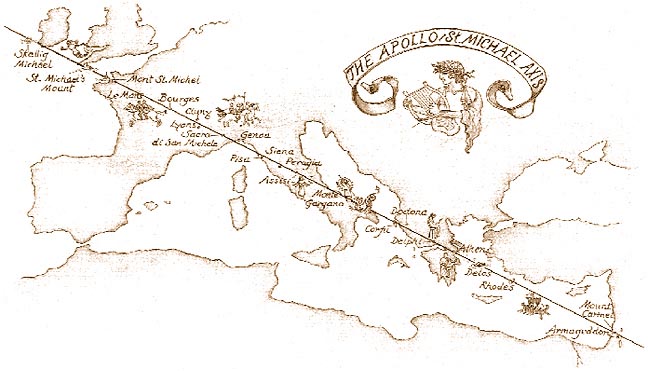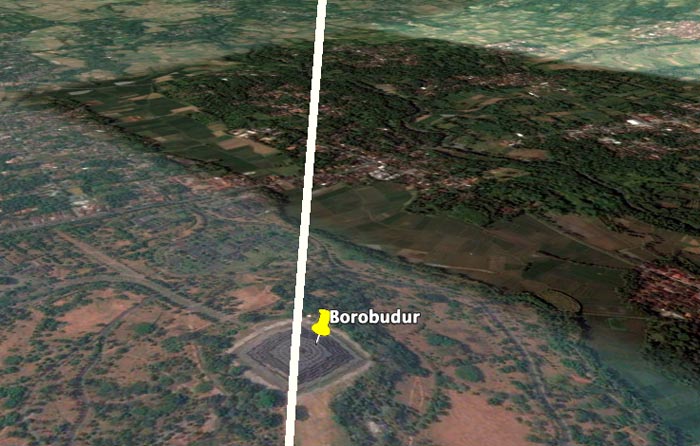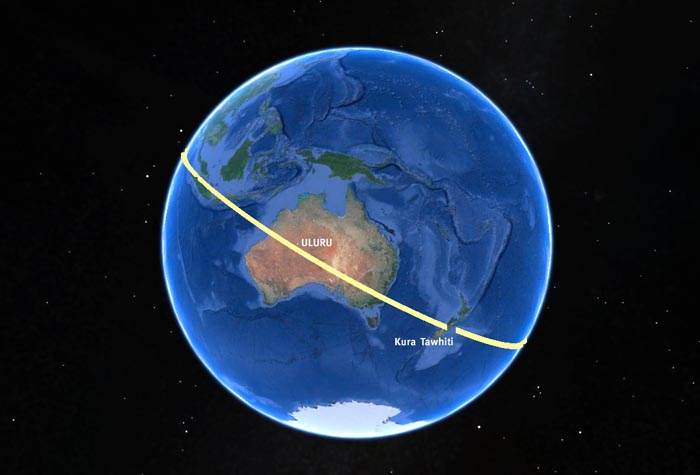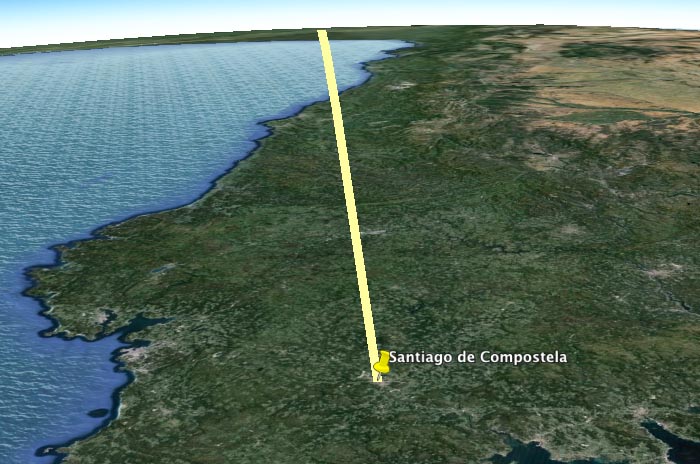V.L.A:
Very long alignments.

A few of the 800 temples, cathedrals and sacred sites dedicated to Apollo and Athena aligned across Europe.

A few of the 800 temples, cathedrals and sacred sites dedicated to Apollo and Athena aligned across Europe.
Ley lines can be found all over the world, and their connections vary from local to global.
Where sacred sites are still in abundance, such as southern Britain, it is still possible to reconstruct the old engineering. Leys connecting standing stones with stone circles from the same era throughout Cornwall are well documented.
Then there are those that connect very old places across several continents: the pyramids of Giza connect to Delphi, which connects to Stonehenge that connects to sites in County Sligo, Ireland. Many lesser-know sites exist along this path.
When researchers Broadhust and Miller were discovering sites across Europe that aly at the node points of two magnetic lines of energy, they also discovered how all the sites— and there are dozens of them— formed a diagonal path from one end of the continent to the other. This alignment is known as the Apollo and Athena.
Like the Michael and Mary lines that align to the Beltane sunrise, so the Apollo and Athena follow the general path of the rising sun on the winter solstice. This would suggest that the ley alignment of sacred sites was done for both geomantic, astronomical, and ritualistic purposes. In Britain, fires would be lit along the Michael-Mary axis at Beltane as part of welcoming the sun's fertilizing qualities upon the land. While we do not know if this practice was maintained in Europe, a line of beacons shining from Skellig Michael on the Irish coast to Meggido in the MIddle East would have been quite a sight to behold.
So, it is feasible that once upon a time a colossal engineering project linking sacred places was undertaken across whole countries. But would our ancestors have dared to try a global ley alignment? The answer is yes.

Ley passes through the heart of Borobudur, Java.
While in New Zealand I took the time to investigate one of the most profound sacred sites in the southern hemisphere, if not the world. Kura Tawhiti, otherwise known as Castle Hill, is a major hill temple consisting of esotic limestone blocks, some 50-feet in height. Each was used as a 'classroom', and the pilgrim would move further up the hill to another stone as they learned their wisdom. The site is said to be as old as the Waitaha, the spiritual race which occupied New Zealand before the Maori.
Initially I was looking for geographic connections to Castle Hill on the opposite side of the world. I noticed that early Maori art is almost indentical to ancient Celtic, particularly in its use of spiral flourishes. In fact the two styles of spiritual art are practically identical. The Celtic influence originally extended to wnat is today northern Spain and Portugal, and if you traced a straight line from Castle Hill through the Earth you end up in northern Spain. In the province of Galicia, to be exact. And this is where the fun begins.

Ley line from Kura Tawhiti to Uluru circles around the globe linking sites of great antyiquity.
Take a line from Castle Hill and aim it at the nearest known landscape temple. In this case, Uluru, or Ayers Rock in central Australia. If you continue that ley you will reach one of the most beautiful temples on Earth: Borobudur in Java.
If you keep extending the line you will then cross Asia, the Ukraine, central Europe, and eventually arrive in Galicia, at an ancient place of veneration called 'the field of stars'. The Romans named it Campo Stella. Today it is one of the most famous pilgrimage places, Santiago de Compostella.
Length of ley? A whopping 11,500 miles.
Return to Alignment.
